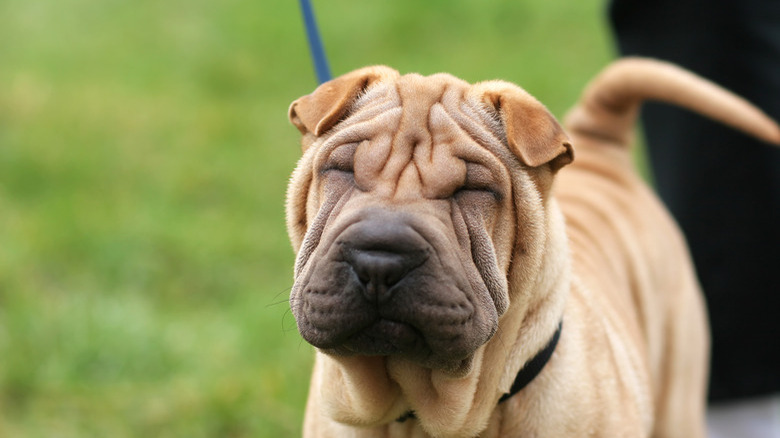Dog Breeds With Black Mouths
When many people think of a dog's tongue hanging out of his mouth, they most likely picture a hairless, pink spot on an otherwise furry face. Some dogs, however, have tongues that reflect a darker hue that's a black or blue-black shade. Additionally, both purebred and mixed dogs may bear pink tongues with dark spots. Like any other physical trait in a dog, mouth color can tell you a lot about what breed your dog is, or may be mixed with.
Dog breeds with black mouths
When a dog has a black or dark blue tongue, it simply means that the tongue is pigmented in a way that's different from the traditional pink coloring. This unique trait is the result of selective breeding, much like facial shape or temperament characteristics. As for breeds that have blue-black tongues, the chow chow and the Chinese shar-pei are some of the most notable, as this is the official breed standard, according to the American Kennel Club. VCA Hospitals states that both chow chows and Chinese shar-peis are ancient dog breeds that originate from the same area of the world, and also have black noses (although light-coated shar-peis may have lighter noses,) and small, dark eyes.
Other dogs have blue-black pigmentation in different parts of their mouths, like the black mouth cur and the Saint Bernard. The black mouth cur is a herding dog that is commonly found in the North American south, and has a muzzle covered in black fur, usually in contrast to a tan or light brown coat. While these dogs aren't recognized by the AKC, they are recognized by the United Kennel Club, which states that their breed standard includes a darkly pigmented interior of the mouth, with the exception of the tongue.
Variations of black pigment
While only a few breeds are known to have entirely black mouths, tongues, or gums, it is not uncommon to find canines with smatterings of blue-black pigment in otherwise pink mouths. Dog breeds known to have spotted tongues include the Airedale terrier, Akita, Australian cattle dog, Australian shepherd, Belgian sheepdog, Belgian Tervuren, Belgian Malinois, bichon frise, bouvier des Flandres, bull mastiff, cairn terrier, and the collie. Of course, mixed-breed dogs who have any of this ancestry in their genetic makeup may also be seen with spotted tongues, gums, or other parts of their mouths as well. While some canines with spotted tongues, gums, or mouths may have any of these breeds in their lineage, a spotted tongue is not necessarily an indicator of the presence of any breed — dark spots are merely deposits of dark pigment on the skin, mouths included.
When to be concerned
It's not common, but sometimes, black spots on the tongue, mouth, or a dark coloring around the gums may indicate a dental disease. If your dog isn't one of those dog breeds with black gums or tongues and you notice spots you haven't seen before, it's best to consult your veterinarian as soon as possible. Merck Veterinary Manual lists endodontic disease, infected scrapes in the mouth, fungal stomatitis, and oral tumors as possible causes of discolorations inside of the mouth. Additionally, if you find that your dog's tongue and gums are suddenly blue or purple, she may have cyanosis, which results in a lack of oxygen in the body, and is often the symptom of an underlying medical issue, says VCA Hospitals.
